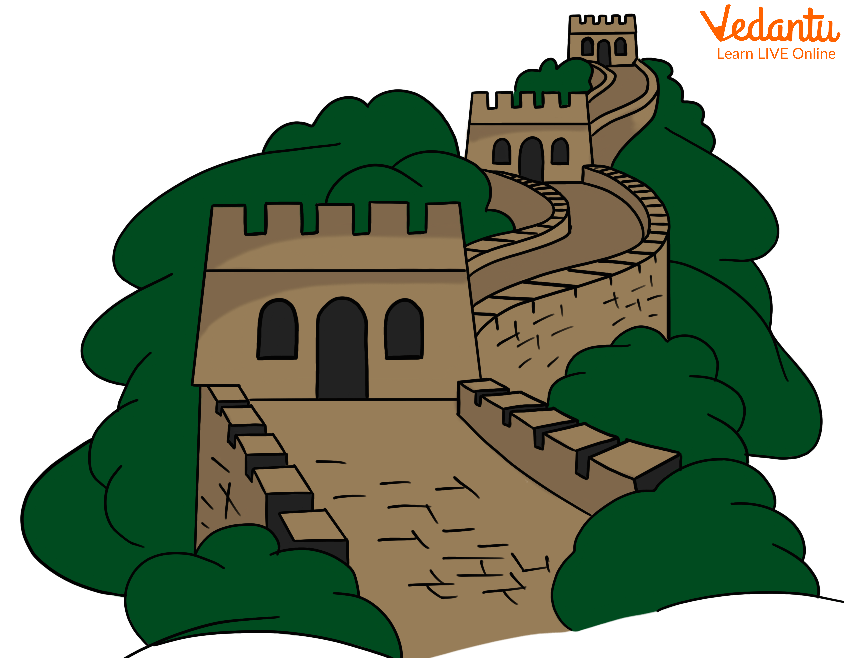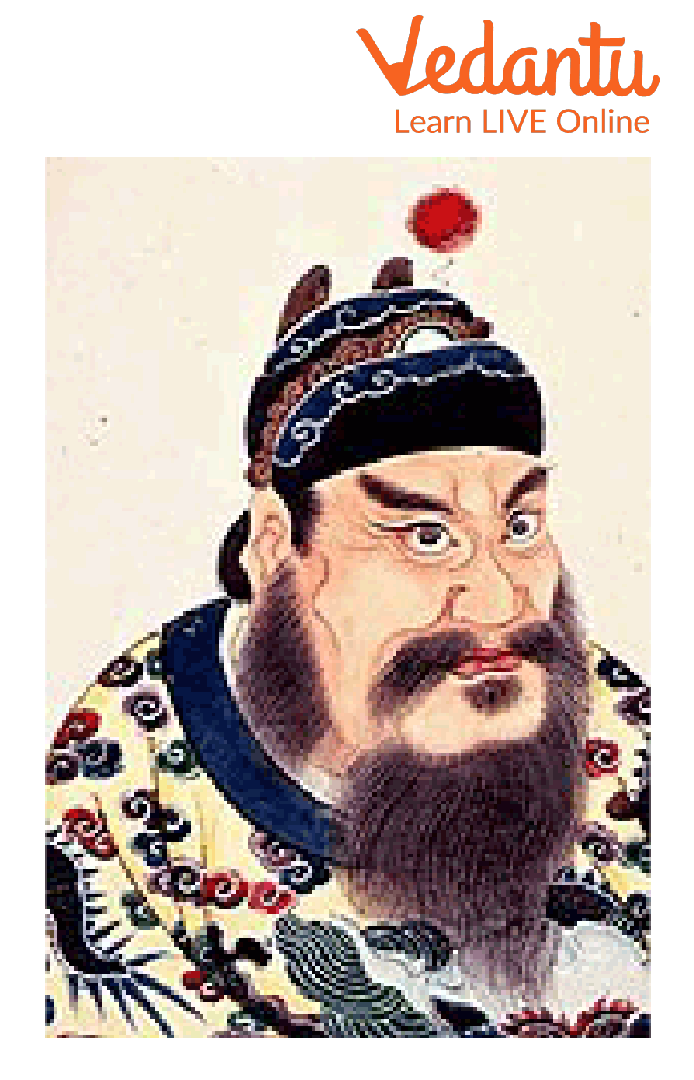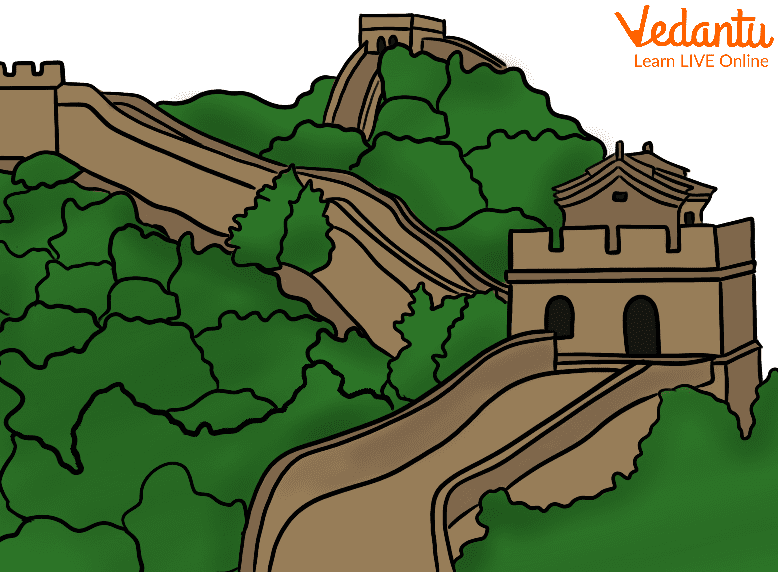




Introduction
Emperor of the Qin dynasty, Shihuangdi founded the first unified Chinese empire. China was united by Qin Shi Huang, often known as the First Emperor, in 220 BCE. He is also well known for his fascination with immortality and his work on the Great Wall of China. He oversaw the incorporation of the existing walls into a single structure. The wall was constructed primarily of wood and rammed dirt at that period.
The Great Wall was mainly constructed from clay bricks, stones, and timber before bricks were used. During the Ming, bricks and other materials like tiles, lime, and stone were extensively used in many places on the wall. Bricks were frequently held together with sticky rice mortar, made of sticky rice soup mixed with slaked lime. As a result, the wall's base, inner and outer brims, and gateways were all built with rectangular-shaped stones.

The Great Wall of China
History of the Great Wall of China
Around 221 B.C., Emperor Qin Shi Huang ordered the building of the Great Wall, and most of the workers who built it were soldiers and prisoners. It is estimated that up to 400,000 people perished while building the wall, many of whom were buried inside the structure. The Great Wall in ancient China reflects interactions and clashes between agrarian and nomadic civilisations. It is also a remarkable example of the time's exceptional military architecture, technology, and art.

Emperor Qin Shi Huang
The Great Wall of China Facts For Kids
The length of the Great Wall of China is approximately 6300 kilometres (3915 miles).
The distance is more like 22000 kilometres if you add up the lengths of all the individual wall parts (13670 miles).
The most extended building ever constructed by humans is the Great Wall of China.
Around 9 metres broad is the wall's widest point (30 ft). The wall's tallest peak is about 8 metres high (26 ft).
The Great Wall is 5-8 metres high (16–26 feet). It was intended to be at least three times as tall as an adult person.
It took more than 2,300 years to construct. Nine or more dynasties constructed, demolished, and renovated various portions of the Great Wall of China.
The wall's initial sections were constructed more than 2000 years ago.
Measures for Management and Protection
The People's Republic of China's Law on the Protection of Cultural Relics lists each section of the Great Wall as a state or regional priority protected site. It ensures the property's genuine, integral, and long-term preservation; the Outstanding Universal Value of the Great Wall and its features must be protected.
To this end, management practices and regulations, conservation interventions for the original fabric and setting, and tourism management shall be more systematic, empirical, categorised, and prioritised.
The characteristics of the Great Wall include its enormous scale and complicated conditions for its protection and conservation. It will be possible to create a harmonious relationship that promotes sustainable development between preserving cultural heritage and social economy and culture.
Things to Know About the Great Wall of China
In December 1987, the Great Wall of China was inducted onto the UNESCO World Heritage List.
The wall is the world's most prolonged man-made construction, measuring around 21196.18 kilometres or 13170.7 miles.
The wall, constructed over centuries by more than six different Chinese dynasties, is more than 2,300 years old. The Qin dynasty, during which the northern walls were joined, is the most well-known of the dynasties.
One of the several myths about the wall is that a helping dragon drew the wall's tracks, which the construction workers followed.
One common misconception is that the Great Wall of China is visible to the naked eye from space.
The wall is not a straight line. It has breaks where mountains or lakes provide protection and spurs that point in various directions.

Single Extended wall- Great Wall of China
Conclusion
The Great Wall, which has a maximum length of over 20,000 kilometres, was continually constructed on the northern frontier of the nation from the third century B.C. to the seventeenth century A.D. as the significant military defence project of succeeding Chinese Empires. Its basic structure comprises fortifications and passes along the wall, horse trails, watchtowers, and shelters on the wall.
FAQs on Definition of the Great Wall of China
1. What exactly is the Great Wall of China's mystery?
The Great Wall was initially constructed to defend the Chinese Empire from outside invaders; however, history records that many northern nomads were able to pass through the barrier.
2. How long did it take to erect China's Great Wall?
The first portion of the "Great Wall" was constructed over 24 years in the Chu State. Following that, additional "Great Wall" portions were built or rebuilt in their original locations to fend off invasions by neighbouring states and later by northern nomads and nations, lasting for more than 2,300 years. Nine dynasties constructed, demolished, and renovated various portions of the Great Wall.
3. The Great Wall of China is one of the ‘Seven Wonders’, but why?
In 2007, the Great Wall was named one of the world's "New Seven Wonders." It is the largest artificial structure on Earth, according to UNESCO. Stone, brick, rammed Earth, wood, and other materials are used to construct the wall.









